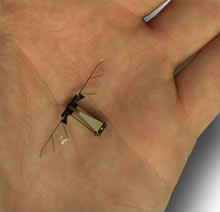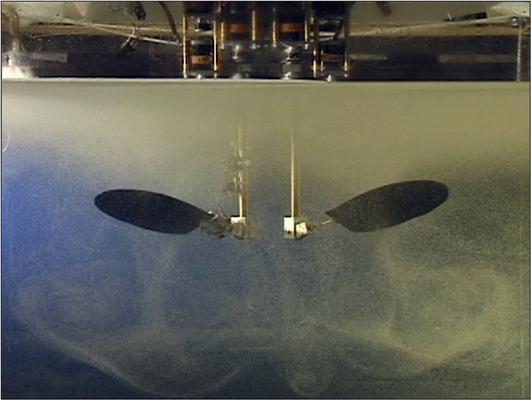Is bigger really always better? Not in this case. Engineers have been working on tiny flying robots that have the ability to spy and detect harmful chemicals. With this new technology, these little fliers could be used by the United States Military in order to help with defending the US. The fly-like look and size would be advantageous in surveillance missions. One model of the micro-flyer weighs only about 60 milligrams and has a 3 centimeter wingspan:

The Harvard robotic fly.
The assembly of this robot was especially difficult due to the small, sturdy parts required. Since current manufacturing processes could not be used, other methods had to be used in order to satisfy the requirements for flight. The designers had to resort to using their own process to construct the robot. They used laser micro-machining to cut thin sheets of carbon fiber. They used the same process for cutting sheets of polymer. The parts were then created by carefully putting these two materials together. In order to make parts that would move, the research team used electroactive polymers that change shape when exposed to voltage.
Several tests were performed to see how efficient the robot could be. It is believed by engineers and biologists that micro-flying robots that fly like insects such as flies use much less energy than those that fly like planes and helicopters.
David Lentink, an aerospace engineer at Wageningen University, performed tests in order to find out whether this hypothesis is true. The experiment used a giant robot fly submerged in a tank of oil. The results were that a spinning fly wing generated that same amount of lift as a flapping fly wing but only used half the energy. This discovery can help in the future design and development of micro flying robots.

Scaled fly wings in an oil tank.
VIDEO: “The first flight of an insect-sized robotic fly”
Prof. Robert Wood, Harvard (LB added: Note the Pink Floyd music at the end!)
Sources:
One Comment
Lorena Barba posted on November 23, 2011 at 6:31 am
For reference, here’s a link to EK131 student Luke Loreti’s blog post on the same topic:
http://blogs.bu.edu/biolocomotion/2011/09/24/robotic-flies-at-harvard/